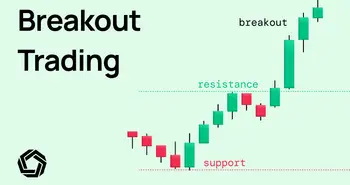The Impact of Risk-On, Risk-Off Trading Strategy

Risk-On, Risk-Off trading strategy has become a significant force in the global financial markets, impacting investors and institutions alike. In this article, I will delve into the basics of this strategy, explore its influence on market volatility and investment decision-making, and discuss its potential future changes.
Understanding Risk-On, Risk-Off Trading Strategy
At its core, Risk-On, Risk-Off trading strategy is based on investor sentiment and market conditions. When market sentiment is optimistic, investors embrace higher-risk assets and seek potential returns, known as the “Risk-On” phase. Conversely, during times of heightened uncertainty or fear, investors flee to safer investments, triggering the “Risk-Off” phase.
Understanding the nuances of Risk-On, Risk-Off trading strategy involves delving into the psychology of market participants. In the Risk-On phase, investors exhibit a greater appetite for risk, driven by a sense of optimism and confidence in the economy. This can lead to increased trading volumes in riskier assets as investors chase higher returns.
The Basics of Risk-On, Risk-Off Trading
In the Risk-On phase, investors are more willing to take on risk by investing in assets such as stocks, commodities, and emerging markets. This is driven by positive economic indicators, robust corporate earnings, and investor confidence. As a result, these assets tend to experience price appreciation.
Conversely, the Risk-Off phase is characterized by a flight to safety, where investors prioritize capital preservation over higher returns. This shift in sentiment can be triggered by various events, such as geopolitical tensions, global economic slowdowns, or financial crises. During this phase, safe-haven assets like government bonds and gold become more attractive, leading to a decrease in demand for riskier assets.
On the other hand, during the Risk-Off phase, investors are more inclined to move towards safe-haven assets, such as government bonds, gold, or the U.S. dollar. This flight to safety is often triggered by geopolitical tensions, economic recessions, or market downturns. These safe-haven assets tend to experience price appreciation while higher-risk assets decline.
Key Factors Influencing Risk-On, Risk-Off Trading
Several factors influence the dynamic nature of Risk-On, Risk-Off trading strategy. Monetary policy decisions by central banks, global economic trends, political stability, and investor sentiment all play a crucial role in shaping the Risk-On, Risk-Off environment.
Additionally, technological advancements and the rise of algorithmic trading have further impacted the speed and intensity of Risk-On, Risk-Off transitions. Automated trading systems can swiftly react to changing market conditions, amplifying the effects of investor sentiment on asset prices. Understanding these factors is essential for investors looking to navigate the complexities of Risk-On, Risk-Off trading strategy effectively.
The Impact on Global Financial Markets
Risk-On, Risk-Off trading strategy has a profound impact on the global financial markets, contributing to market volatility and influencing market cycles.
Global financial markets are intricately connected, with events in one region often having ripple effects across the world. The Risk-On, Risk-Off trading strategy is no exception, as its effects can be felt far beyond the initial point of action. For example, a Risk-On sentiment in the U.S. stock market can lead to increased investment in emerging markets, driving up prices and creating opportunities for growth. On the flip side, a Risk-Off sentiment can trigger a flight to safety, causing capital outflows from riskier assets and impacting markets worldwide.
How Risk-On, Risk-Off Trading Affects Market Volatility
During Risk-On periods, asset prices tend to rise as investors embrace riskier investment opportunities. This can lead to increased market volatility, as the influx of capital drives price fluctuations. Conversely, during Risk-Off periods, market volatility often decreases as investors prioritize safety over returns.
Market volatility is not just a short-term phenomenon but can also have long-lasting effects on investor sentiment and market stability. High volatility can create opportunities for traders to profit from price swings but can also increase the risk of significant losses. Understanding the dynamics of Risk-On, Risk-Off trading is essential for navigating these fluctuations and managing risk effectively.
The Role of Risk-On, Risk-Off Trading in Market Cycles
Risk-On, Risk-Off trading strategy plays a significant role in market cycles. It can amplify market trends, with the Risk-On phase fueling bull markets and the Risk-Off phase contributing to market corrections or bearish sentiments. Understanding these cycles is crucial for investors to make well-informed investment decisions.
Market cycles are a natural part of the financial ecosystem, characterized by periods of expansion and contraction. The Risk-On, Risk-Off trading strategy can both accelerate and moderate these cycles, influencing the timing and intensity of market movements. Investors who can identify the signals of shifting market cycles are better equipped to adjust their investment strategies accordingly, positioning themselves for success in varying market conditions.
The Impact on Individual Investors
Individual investors are not immune to the effects of Risk-On, Risk-Off trading strategy. It influences portfolio management and can significantly impact investment decision-making.
Understanding how Risk-On, Risk-Off trading strategy affects individual investors is crucial for navigating the complexities of the financial markets. The dynamic nature of these strategies requires investors to stay vigilant and informed to make well-informed decisions.
Risk-On, Risk-Off Trading and Portfolio Management
When implementing a Risk-On, Risk-Off approach, investors need to carefully manage their portfolios. During the Risk-On phase, diversification across various assets and sectors can help capture potential returns. Conversely, during the Risk-Off phase, a more defensive approach with a focus on capital preservation is essential.
Furthermore, incorporating risk management techniques such as stop-loss orders and hedging strategies can provide an added layer of protection during volatile market conditions. By actively monitoring and adjusting their portfolios based on the prevailing market sentiment, individual investors can adapt to the ever-changing landscape of Risk-On, Risk-Off trading.
The Influence on Investment Decision-Making
Risk-On, Risk-Off trading strategy influences investment decision-making by prompting investors to consider market sentiment, economic indicators, and broader trends. Adopting a balanced approach that accounts for both Risk-On and Risk-Off scenarios can help mitigate potential losses and enhance long-term returns.
Moreover, conducting thorough research and analysis before making investment decisions is paramount in the realm of Risk-On, Risk-Off trading. By evaluating historical data, assessing risk factors, and staying abreast of market developments, individual investors can make informed choices that align with their financial goals and risk tolerance.
As an expert in Risk-On, Risk-Off trading strategy, I have seen the impact firsthand. One piece of advice I would share is the importance of staying informed and being adaptable. Market conditions can change rapidly, and being able to adjust your investment strategy accordingly is crucial for success.
The Impact on Institutional Investors
Institutional investors, such as pension funds, hedge funds, and asset management firms, are also significantly influenced by Risk-On, Risk-Off trading strategy. It affects asset allocation and investment strategies.
Risk-On, Risk-Off Trading and Asset Allocation
For institutional investors, understanding and effectively implementing Risk-On, Risk-Off trading strategy is critical when allocating assets. During Risk-On phases, they may allocate a higher percentage of their portfolio to riskier assets, aiming for higher returns. In contrast, during Risk-Off phases, they may shift towards more defensive asset allocation strategies to preserve capital.
The Effect on Investment Strategies
Risk-On, Risk-Off trading strategy plays a vital role in shaping institutional investment strategies. These investors employ quantitative models and algorithms to identify shifts in market sentiment and adjust their positions accordingly. Sophisticated risk management techniques and extensive research are key components of successful institutional investment strategies.
The Future of Risk-On, Risk-Off Trading
The future of Risk-On, Risk-Off trading strategy holds both opportunities and challenges, and it is essential to consider the potential changes and long-term impacts.
Potential Changes in Risk-On, Risk-Off Trading
As markets evolve, Risk-On, Risk-Off trading strategy may undergo changes in response to technological advancements, regulatory developments, and geopolitical shifts. Understanding and adapting to these changes will be crucial for investors to navigate the dynamic financial landscape effectively.
The Long-Term Impact of Risk-On, Risk-Off Trading
The long-term impact of Risk-On, Risk-Off trading strategy is yet to be fully realized. It has become a fundamental component of investment decision-making and market dynamics. Future research and analysis will aid in comprehending how this strategy shapes financial markets in the years to come.
FAQ: Frequently Asked Questions
What is Risk-On, Risk-Off trading strategy?
Risk-On, Risk-Off trading strategy is an approach where investors embrace riskier assets during periods of optimism and move towards safe-haven assets during times of uncertainty or fear.
How does Risk-On, Risk-Off trading strategy impact market volatility?
Risk-On, Risk-Off trading strategy can contribute to increased market volatility during Risk-On periods and decreased volatility during Risk-Off periods.
Why is Risk-On, Risk-Off trading strategy important for individual investors?
Risk-On, Risk-Off trading strategy affects individual investors by influencing portfolio management decisions and shaping their investment strategies.
What is the future of Risk-On, Risk-Off trading strategy?
The future of Risk-On, Risk-Off trading strategy will depend on various factors such as technological advancements, regulatory changes, and global market trends. Adapting to these changes will be vital for investors.
In conclusion, Risk-On, Risk-Off trading strategy has a significant impact on global financial markets, individual investors, and institutional players alike. By understanding the basics of this strategy, considering its influence on portfolio management and investment decision-making, and preparing for potential future changes, investors can navigate the dynamic financial landscape with confidence. Stay informed, be adaptable, and leverage the opportunities presented by Risk-On, Risk-Off trading strategy to achieve financial success.
As you navigate the ebbs and flows of the Risk-On, Risk-Off trading strategy, having the right tools and platform can make all the difference. Morpher is the innovative trading platform that empowers you to trade with zero fees, infinite liquidity, and the flexibility of fractional investing. Whether you're looking to capitalize on a Risk-On phase with 10x leverage or protect your investments during a Risk-Off period, Morpher's blockchain technology offers a unique trading experience tailored to your needs. Ready to transform your trading strategy? Sign Up and Get Your Free Sign Up Bonus at Morpher.com and join the future of investing today.

Disclaimer: All investments involve risk, and the past performance of a security, industry, sector, market, financial product, trading strategy, or individual’s trading does not guarantee future results or returns. Investors are fully responsible for any investment decisions they make. Such decisions should be based solely on an evaluation of their financial circumstances, investment objectives, risk tolerance, and liquidity needs. This post does not constitute investment advice.

Painless trading for everyone
Hundreds of markets all in one place - Apple, Bitcoin, Gold, Watches, NFTs, Sneakers and so much more.

Painless trading for everyone
Hundreds of markets all in one place - Apple, Bitcoin, Gold, Watches, NFTs, Sneakers and so much more.









